Maruti Swift [2014-2018] ZXi
- Swift [2014-2018]
- Specs & Features
- Variants
- Colours
- User Reviews
![Maruti Suzuki Swift [2014-2018] ZXi Maruti Suzuki Swift [2014-2018] ZXi](https://imgd.aeplcdn.com/664x374/cw/cars/maruti-suzuki/swift.jpg?q=80)
![Maruti Suzuki Swift [2014-2018] Right Rear Three Quarter Maruti Suzuki Swift [2014-2018] Right Rear Three Quarter](https://imgd.aeplcdn.com/664x374/ec/E6/20/14411/img/ol/Maruti-Suzuki-Swift-Right-Rear-Three-Quarter-31517.jpg?v=201711021421&q=80)
![Maruti Suzuki Swift [2014-2018] Rear View Maruti Suzuki Swift [2014-2018] Rear View](https://imgd.aeplcdn.com/664x374/ec/E6/20/14411/img/ol/Maruti-Suzuki-Swift-Rear-view-46370.jpg?v=201711021421&q=80)
![Maruti Suzuki Swift [2014-2018] Front View Maruti Suzuki Swift [2014-2018] Front View](https://imgd.aeplcdn.com/664x374/ec/E6/20/14411/img/m/Maruti-Suzuki-Swift-Front-view-31518_ol.jpg?v=201711021421&q=80)
![Maruti Suzuki Swift [2014-2018] Front View Maruti Suzuki Swift [2014-2018] Front View](https://imgd.aeplcdn.com/664x374/ec/E6/20/14411/img/ol/Maruti-Suzuki-Swift-Front-view-46367.jpg?v=201711021421&q=80)
![Maruti Suzuki Swift [2014-2018] Dashboard Maruti Suzuki Swift [2014-2018] Dashboard](https://imgd.aeplcdn.com/664x374/ec/E6/20/14411/img/ol/Maruti-Suzuki-Swift-Dashboard-46737.jpg?v=201711021421&q=80)
![Maruti Suzuki Swift [2014-2018] Steering Wheel Maruti Suzuki Swift [2014-2018] Steering Wheel](https://imgd.aeplcdn.com/664x374/ec/E6/20/14411/img/ol/Maruti-Suzuki-Swift-Steering-Wheel-31525.jpg?v=201711021421&q=80)
![Maruti Suzuki Swift [2014-2018] Steering Wheel Maruti Suzuki Swift [2014-2018] Steering Wheel](https://imgd.aeplcdn.com/664x374/ec/E6/20/14411/img/ol/Maruti-Suzuki-Swift-Steering-Wheel-46827.jpg?v=201711021421&q=80)
Maruti Swift [2014-2018] ZXi Review
Maruti Swift’s success over the last decade is unprecedented. In the 12 years of its existence, Maruti has sold over 1.7 million units, which is phenomenal for a sporty hatch. This is despite it being not the most practical, comfortable and it even lacked features as compared to the competition.
Introduction

Maruti Swift’s success over the last decade is unprecedented. In the 12 years of its existence, Maruti has sold over 1.7 million units, which is phenomenal for a sporty hatch. This is despite it being not the most practical, comfortable and it even lacked features as compared to the competition.
Now the third generation of the hatch is about to be launched and if the impressive new Dzire is anything to go by then the Swift which is essentially a hatch version of the sedan, will surely send its rivals running for cover. We got our hands on the highly anticipated hatch to see if Maruti has delivered a great product which millions of Indians will end up buying. Like with the Dzire, Maruti will launch the new Swift with a manual as well as an automatic transmission, on both the petrol and diesel variant. In this review we will be talking about the petrol version.

Let’s start with the design and Maruti has done a good job of differentiating the Swift from the Dzire. Upfront the grille looks sporty, thanks to the omission of the chrome surround from the Dzire and the sharply cut bumper further adds to the appeal. In profile it looks exactly the same as the Dzire till the B pillar, post which the rear door and tail section is all-new. The unusual placement of the rear door handle, makes it look like a sporty three door. At the back, Maruti has kept it simple and the big flat boot section actually reminds of the Nissan Micra. Based on the new Heartec platform the new Swift has shed around 85kg as compared to the old car despite it being a larger car.
How is it on the inside?

As expected the Swift gets the dashboard from the Dzire, but Maruti has managed to differentiate the two thanks to small changes and different ambiance. The Swift gets an all black cabin as compared to the beige on the Dzire which surly helps it look sporty. You also get round centre vents and air-con controls, and silver accents as compared to wood on the Dzire. Although the dashboard looks minimalistic, it is smartly styled, with the large touchscreen infotainment system dominating proceedings. The automatic doesn’t come in the top variant so you get a traditional music system which looks outdated. The touchscreen system on the top ZXi plus variant features a screen that is crisp and oozes of quality. The same can’t be said about the rest of the cabin. Plastic quality and fit and finish though decent, is not as nice as the Hyundai Grand i10.

The front seats are accommodating and offer good support. But it’s at the back where space and comfort has taken a big leap forward as compared to the old car. The new Swift offers much more kneeroom and the wider cabin gives it an airy ambiance. The bench itself is well shaped and comfortable. What would have made the rear seat even better is firmer cushioning. There are plenty of storage spaces in the cabin in the form of multiple cubby holes and even the glovebox is of decent size. The boot at 268 litres is much bigger than before but like with the old car the lid opening is quite high and narrow, which makes loading heavy bags a shoulder straining affair.

In the top ZXi plus trim the Swift comes equipped with touchscreen infotainment system which houses Apple CarPlay, Android Auto, navigation and bluetooth telephony. Apart from this the Swift gets all the basics like climate control, key-less go, reverse camera with sensors, auto headlamps, daytime running lamps and a comprehensive trip computer. In terms of safety, Maruti is offering two airbags and ABS as standard across the range.
How does it drive?

The new Swift comes with the same 1.2-litre naturally aspirated petrol motor and output figures of 83bhp and 113Nm are unchanged too. The on-road performance though is a lot better thanks to the lighter chassis. The motor is responsive and has a linear tug from low engine speeds, which makes it great for city commutes. In fact, the motor’s drivability is really impressive and you can get away in third gear from as low as 20kmph without any judder or vibration from the motor. This engine revs quite freely and when you arrive at the 6200rpm red line, you hear a nice sporty snarl. Even the 5-speed manual gearbox is crisp and snappy to use. The light and short throw allows you to execute a quick shift with just the flick of a wrist, and this reduces the stress on the driver even further. We managed to strap our Vbox timing gear on the manual petrol variant and it returned some impressive figures. Zero to 100kmph is executed in a quick 12.26 seconds which makes it much quicker than the outgoing car and even drivability test time of 13.09sec for 20-80kmph in third gear is impressive for a naturally aspirated petrol motor.

We also sampled the AMT version of the petrol car. Slot the gear shifter into D and the Swift AMT moves forward in a smooth manner. Whether it be ambling along in the city or even cruising steadily on the highway, this gearbox works really well. It does show it’s basic roots when you are in need of instant change of pace, as the gearbox struggles to drop the gears quickly and there is a brief pause before the power is delivered. So overtaking on a narrow two lane road has to be planned well in advance and its best to gently feed in the power so that you can run through the gears smoothly. The best mode for going quickly, however, is the gear lever-operated tiptronic manual, which will hold gears. While for everyday driving, the auto modes work great, its only if you are in a real hurry, will you will feel the need to swap cogs yourself.

The new Swift doesn’t disappoint when you show it a set of corners. The light steering might feel unnerving around the straight ahead position initially, but once use to, it is a precise unit. The harder you push, the better the Swift feels and the chassis balance is just right with just a hint of lift-off oversteer at the limit.
As for the ride, due to the light weight it does feels a bit jiggly at low speeds and not very adept at handling sharp bumps, and you can feel the suspension thump through the light body. Though it never gets to the point of being uncomfortable and it is something you can live with. However, as you go faster, it settles down to offer a fairly flat and consistent ride. The brakes on the other hand offer good bite and stopping power with good pedal feel.
Should I buy one?

There are very few reasons not to. The new Swift is a huge step ahead of its predecessor and that is a huge compliment for a car that is already a segment best seller. It has a stylish exterior, the cabin is spacious and feels premium, it has loads of equipment and the lighter new chassis has improved driving pleasure considerably. The only remaining question is the price which we will know in around 15 days time at the auto expo. As a product, the new Swift just feels right on the money with very few flaws to speak off.
Where does it fit in?

The Maruti Swift rivals the likes of Hyundai i10, Nissan Micra and Ford Figo. Where the old car was priced at par with the competition the new Swift might become the most expensive in its segment.
Pictures by: Kapil Angane
Specifications & Features
- Specifications
- Features
- Specifications
- Features
Specifications
Engine & Transmission
- Engine1197 cc, 4 Cylinders Inline, 4 Valves/Cylinder, DOHC
Timely services will keep a motor efficient and in top shape.
- Engine TypeK Series with VVT, Multipoint injection
The official title given by the manufacturer in terms of the name of the engine, the displacement and the number of cylinders.
A bigger displacement and more than four-cylinders generally indicate a performance-oriented engine.
- Fuel TypePetrol
All cars in India either run on petrol, diesel, CNG, LPG or electric power.
- Max Power (bhp@rpm)83 bhp @ 6000 rpm
Gives a good idea of the performance of the vehicle under full thrust. A higher figure here usually means a higher top speed as well.
Higher the power, the peppier the engine but it can also affect fuel economy.
- Max Torque (Nm@rpm)115 Nm @ 4000 rpm
Relates to in-gear acceleration. A higher figure here means better roll-on acceleration, fewer gear shifts, and possibly better fuel efficiency.
The more torque at low RPM range makes the engine feel more responsive. It also allows the engine to run smoothly without too many gear changes.
- Mileage (ARAI)20.4 kmpl
This is the maximum fuel efficiency that an engine gives. All numbers are provided by the manufacturer based on tests conducted and specified by the standards of the ARAI (Automotive Research Association of India)
Such fuel efficiency attained while driving in special conditions makes it unlikely to get it in real-world conditions
- DrivetrainFWD
Cars come with different drivetrain configurations depending on the segment.
Front-wheel drive (FWD) is most common in mainstream cars while expensive cars or SUVs come with rear-wheel drive (RWD) or all-wheel drive (AWD).
- TransmissionManual - 5 Gears
Type of transmission used to transfer power from the engine to the wheels
A manually operated transmission is the most popular type, thanks to its simplicity and low cost. Varied types of automatic transmissions are also available.
Dimensions & Weight
- Length3850 mm
The length of the car decides its segment. In India, cars that are less than 4 metres in length enjoy reduced excise duties.
- Length: 3850
Longer length results in more cabin space. It also adds to straight line stability.
- Width1695 mm
A car's width is defined as its widest point without its mirrors.
- Width: 1695
Although more width gives you more lateral space inside the cabin, it makes the car more difficult to park in narrow spots.
- Height1530 mm
The height of the car denotes the highest point of the vehicle from the ground.
- Height: 1530
Taller the car, the more headroom there is on offer inside the cabin. However, a tall boy stance also affect the car’s centre of gravity which can cause more body roll.
- Wheelbase2430 mm
The space between the center of the front and rear wheels.
- Wheelbase: 2430
The longer the wheelbase, the more space there is inside the cabin.
- Ground Clearance170 mm
It’s the space between the lowest point of the car and the ground.
- Ground Clearance: 170
If the car has a good amount of clearance, it’s easier for it to clear big speed breakers and overall, deal with bad roads.
- Kerb Weight965 kg
The total weight of the vehicle with all the standard equipment and all the required fluids.
A lightweight car will always be more efficient and easier to manoeuvre whereas a heavy car would give you a sense of solidity while driving.
Capacity
- Doors5 Doors
The number of doors define the category of car. For example – four door means sedan, two-door means coupe while five-doors usually refer to a hatchback, MPV or an SUV.
- Doors: 5
- Seating Capacity5 Person
The number of people that can be seated comfortably in the car, which has also been mandated by the car manufacturer.
- Seating Capacity: 5
- No of Rows2 Rows
Smaller cars usually have two rows which can seat five, but some SUVs and MPVs have three rows and can seat around 7-8 passengers.
- Bootspace205 litres
Boot space defines how practical the car is with respect to how much luggage it can carry.
- Bootspace: 205
A boot with a large and wide opening is ideal for loading heavy items. Additionally, a lower loading height also makes it easy to put in luggage.
- Fuel Tank Capacity42 litres
The official volume of the fuel tank of a car, usually denoted in litres.
If a car has a large fuel tank, it can cover long distances without refuelling.
Suspensions, Brakes, Steering & Tyres
- Front SuspensionMacPherson Strut
Almost all cars in India use an independent front suspension which is usually the MacPherson Strut type.
- Rear SuspensionTorsion Beam
The rear suspension can either be non-independent or independent.
Most of the budget cars have non-independent suspension while the more expensive ones get independent rear suspension which offers better bump absorption.
- Front Brake TypeDisc
Most of the vehicles sold in India get ventilated or non-ventilated disc brakes upfront.
- The ventilated discs are more popular thanks to them providing better stopping power and it also works well in hot conditions.
- Rear Brake TypeDrum
In affordable cars, drums brakes are fitted at the rear as they are cost effective.
Disc setup at the rear is now getting more popular as cars are getting faster in the real world.
- Minimum Turning Radius4.8 metres
The official kerb-to-kerb minimum radius a car takes to complete a 180-degree turn.
Shorter the turning radius, the lesser space you need to make a tight turn or to take a U-turn.
- Steering TypePower assisted (Electric)
Almost all steering systems in cars today have an assist to help park them better at low speeds - these can be hydraulic, electro-hydraulic or electric.
- WheelsAlloy Wheels
The wheels used on cars are either steel rims with plastic wheel cover hub or alloy wheels on higher spec models or expensive cars.
Razor cut, or diamond cut alloy wheel design are not getting more popular. Manufacturers usually offer these in top-end trim of their car models.
- Spare WheelSteel
Important in a country with varying quality of roads, spare wheels ensure one doesn’t get stranded when one of the main tyres gets damaged.
Select premium car models feature space savers (smaller than the stock wheels) to save on boot space.
- Front Tyres185 / 65 R15
The profile/dimension of rubber tyre that fits on the front wheels.
- Rear Tyres185 / 65 R15
The profile/dimension of rubber tyre that fits on the rear wheels.
Features
Safety
- Overspeed Warning-
Mandatory safety system for cars sold in India, a single beep is emitted after 80kmph and continuous ones after 120kmph
- Puncture Repair Kit-
These enable users to repair a puncture effortlessly, saving the time/effort involved in replacing it with the spare wheel
Avoid driving on a flat/deflated wheel too long as it can cause expensive repairs
- NCAP Rating-
The official crash test safety rating given to a car by one of the many testing agencies around the world
- Airbags-
- Rear Middle Three Point seatbeltNo
Safer three-point seatbelts for passengers seated in the middle of the second row of seats.
Budget cars are usually fitted with more economical lap belts for the middle-occupant.
- Rear Middle Head RestNo
A headrest for the middle occupant of the second-row of seats.
Budget cars are usually not offered with headrests for the middle occupant of the second-row to save on costs. Headrests are instrumental in reducing whiplash injuries in case of an accident
- Tyre Pressure Monitoring System (TPMS)No
A digital gauge that provides the live status of the air pressure in every tyre of a car.
For accurate readings, ensure that the sensors on the rim are not tampered with during any wheel/tyre repairs
- Child Seat Anchor PointsNo
Anchor points or strap systems built into car seats to keep child seats in place, especially during a crash
ISOFIX is an international standard for child seat anchor points, but not all car manufacturers follow this standard
- Seat Belt WarningYes
Mandatory fitment in cars sold in India, emits loud beeps when it detects that occupants are not wearing their seatbelts.
Seat belt warning is mandatory for front-seat occupants, but it is recommended that all occupants wear seat belts.
Braking & Traction
- Anti-Lock Braking System (ABS)Yes
An electronic system that prevents the tyres from locking and skidding in emergency braking situations by pulsing the brakes (quickly releasing and reapplying the brakes)
ABS is a great accident prevention technology, allowing drivers to steer while braking hard
- Electronic Brake-force Distribution (EBD)Yes
An electronic system that redirects braking forces among the four brakes to stop the car as quickly and stably as possible
- Brake Assist (BA)Yes
A system that increases brake pressure to help the car stop quicker
Even when emergency braking, it is observed that drivers don’t apply maximum brake pressure through the pedal, the BA system provides additional pressure to help stop the car quicker
- Electronic Stability Program (ESP)No
System designed to improve car stability and control, especially when the car is accelerating.
ESP or ESC cannot increase traction but rather improve control or help regain control in slippery conditions.
- Hill Hold ControlNo
A feature that prevents the car from rolling backwards when stopped on a slope
- Traction Control System (TC/TCS)No
This system cuts power to those wheels that are spinning without grip/traction
Given the option, keep traction control on all the time.
Locks & Security
- Engine ImmobiliserYes
A security device that prevents the engine from being started unless the key is present
- Central LockingRemote
This feature let's one unlock all the doors remotely or with a key
- Speed Sensing Door LockYes
This feature automatically locks the car's doors when it reaches a preset speed
A convenient feature for those who can't remember to lock the doors
- Child Safety LockYes
Such locks are built into the rear doors to prevent rear seat occupants from opening the doors
Comfort & Convenience
- Air ConditionerYes (Automatic Climate Control)
The different types of air-conditioning systems used to cool the cabin
Maintaining the lowest temperature and first blower speed offers the best results.
- Front AC-
- Rear AC-
- HeaterYes
This feature allows warm air to pass through the air-con vents for heating the cabin
- Vanity Mirrors on Sun VisorsCo-Driver Only
Compact mirrors fitted to the inside of the sunvisor
- Cabin Boot AccessNo
The option of being able to access the boot space while sitting inside the car
- Anti-glare MirrorsManual - Internal Only
These mirrors negate the glare from headlight beams of cars behind you
Since a large chunk of people love driving around in their high beam, these mirrors come in handy
- Parking AssistNo
A feature that aids drivers park with ease and greater precision using sensors/cameras
It comes as a boon for drivers who are not used to parking in tight spots
- Parking SensorsRear
Sensors that are usually located on the bumpers of a car to assist/alert the driver while parking
It takes the stress out of manoeuvring in confined spaces
- Cruise ControlNo
A system that automatically controls the speed of the car
- Headlight and Ignition On ReminderYes
An alert that warns one from leaving the car with the headlight and ignition switched on
- Keyless Start/ Button StartYes
When fitted, this system allows the car to be switched on without removing the key from the driver’s pocket or vicinity.
Keyless entry and start/stop (KESS) systems in some cars also include operation via a smartphone.
- Steering AdjustmentTilt
A function where the steering wheel moves up/down, in/out as per the driver's requirement
When both rake and reach adjustments are incorporated, it makes for a tailormade driving position
- 12V Power Outlets1
This socket provides current to a cigarette lighter style 12 volt plug
It helps charge smartphones, tablets, laptops, rechargeable batteries and other USB chargers. It also powers a compressor that inflates tyres and the humble cigarette lighter!
Telematics
- Find My Car-
An app based feature that allows one to find where their car is located/parked
- Check Vehicle Status via App-
The requisite app will provide information regarding various functions such as speed and fuel alerts
- Geo-fence-
A service that triggers actions like notifications and security alerts when a car enters/leaves a set location
- Remote AC: On / Off via App-
The smartphone app turns on the car's AC to attain the required cabin temperature even before one boards it
More so comes in handy when cabin temperatures are extreme before you board the vehicle
- Remote Car Lock/Unlock via App-
The smartphone app allows one to remotely lock/unlock the car's doors from just about anywhere
This function is helpful when the key fob isn't working properly
- Car Light Flashing & Honking via App-
The smartphone app sounds the horn and flashes the headlights of your car so that you can locate it
Seats & Upholstery
- Driver Seat Adjustment-
- Front Passenger Seat Adjustment-
- Rear Row Seat Adjustment-
Rear seat adjustments make for an enlarged luggage space when there's lots of baggage to haul.
- Seat UpholsteryFabric
When it's time to replace, use a fabric that grips and are inherently cool to the touch
- Leather-wrapped Steering WheelNo
Leather not only grips your palms well, but it also offers a premium feel
- Leather-wrapped Gear KnobNo
- Driver ArmrestNo
The armrest located between the front passengers which helps comfort the driver's arm while driving
- Rear Passenger Seat TypeBench
- InteriorsSingle Tone
Depicts if the cabin comes with a single or dual-tone colour scheme
- Interior ColoursBlack
The various color shades used within the cabin
- Rear ArmrestNo
- Folding Rear SeatFull
Some rear seats have the option to be be folded to offer more practicality
- Split Rear SeatNo
Sections of the rear seat are capable of being folded down separately
This function bumps up practicality as the boot space increases when required.
- Front Seatback PocketsYes
The pockets behind the front seats which help rear seat occupants store their stuff
- HeadrestsFront & Rear
The portion extending from or fixed to the seat that supports the head
Storage
- Cup HoldersFront Only
- Driver Armrest StorageNo
The storage space within the armrest that's located between the front passengers
- Cooled GloveboxNo
A feature where cool air from the air-conditioner is diverted to the glovebox
- Sunglass HolderNo
Doors, Windows, Mirrors & Wipers
- ORVM ColourBody Coloured
Mirrors that are placed on the car's exterior, around the door, to aid the driver see behind the vehicle
Placing/sticking wide-angle mirrors on the ORVMs can enhance the rear view tremendously.
- Scuff Plates-
This is fitted where the door meets the frame to protect it from scratches and dust
Not using scuff plates may result in the door sill giving away prematurely.
- Power WindowsFront & Rear
When the car's windows can be raised/lowered by pressing a button/switch
In emergencies where the power window electronics have jammed, exit the vehicle by kicking out the windscreen
- One Touch DownDriver
This feature allows a user to roll down the windows with a single press of a button
This feature reduces the time your hand is away from the steering wheel
- One Touch UpNo
This feature allows a user to roll up the windows with a single press of a button
This feature reduces the time your hand is away from the steering wheel
- Adjustable ORVMsElectrically Adjustable & Retractable
Different ways of adjusting the door mirror to suit the driver's requirement
Tremendously aids driving judgement in a variety of tight situations.
- Turn Indicators on ORVMsYes
Turn indicators are fitted to the door mirrors for improved visibility
- Rear DefoggerYes
A feature that removes condensed water droplets from the rear windscreen to improve visibility
Turning air recirculation off helps gain faster results.
- Rear WiperYes
Although a seemingly minuscule feature, it negates the hatchback's/SUV's inherent ability to retain dirt/water on the rear windscreen.
- Exterior Door HandlesBody Coloured
- Rain-sensing WipersNo
When the system detects water droplets on the windshield, it activates the wipers to improve driver visibility
This feature can be intrusive especially while you are negotiating a tricky bend at a higher speed
- Interior Door HandlesChrome
- Door PocketsFront & Rear
- Side Window BlindsNo
These protective shields keep the sun's rays from affecting the occupants
With restrictions on darker sun films, these blinds are a huge relief on sunny days.
- Bootlid OpenerInternal with Remote
The various methods of opening the boot lid
Exterior
- Sunroof / MoonroofNo
Ensure the sunroof is closed before exiting the vehicle to prevent dirt/rain from entering the cabin
- Roof-mounted AntennaYes
The compactness of the roof-mounted antenna prevents its damage in certain situations
- Body-coloured BumpersYes
Having parking sensors will save your bumper paint if it brushes by obstacles
- Chrome Finish Exhaust PipeNo
- Body KitNo
Functional or purely aesthetic parts added to the car's body such as side skirts and roof/bonnet scoops
- Rub-stripsNo
A strip of rubber fitted to the sides of the car's doors or bumpers to prevent dents and dings
Opt for quality strips because the cheaper ones tend to come off too soon/look shabby.
Lighting
- HeadlightsHalogen
- Automatic HeadlampsNo
Such headlights automatically switch on and off when they sense bright or dark driving conditions
Keeping them switched on at all times gives the user the best results
- Follow Me Home HeadlampsNo
The headlamps remain lit for sometime when the car is locked/unlocked to aid user visibility in dark surroundings
- Cornering HeadlightsNo
These lights turn left and right based on steering inputs to illuminate the sides of the car
- TaillightsHalogen
Inspect tail lamp bulbs at periodic intervals for optimum safety.
- Daytime Running Lights-
Lights that automatically switch on during the day for increased visibility
- Fog LightsHalogen on rear
A type of lamp that improves driver visibility while driving through fog
The yellow/amber fog lights are preferable as they are warm to the eyes and do not reflect from the fog.
- Ambient Interior Lighting-
Additional lighting apart from the roof-mounted courtesy/map lamps. These are added for a sense of style and luxury rather than utility.
- Puddle LampsNo
Incorporated into the bottom section of a car's door mirrors, they light up the ground underneath the front door when the door is unlocked
- Cabin LampsFront
- Light on Vanity MirrorsNo
A lamp that's located around the vanity mirror behind the sun visor
- Rear Reading LampNo
- Glovebox LampNo
- Headlight Height AdjusterYes
Allows adjustment to the height of the headlight beams via a switch on the dashboard
Instrumentation
- Instantaneous ConsumptionNo
It indicates how much fuel is being used that very instant your car is moving
- Instrument ClusterAnalogue
A screen situated mostly behind the steering wheel displaying information and warning lights regarding the car's various vitals
- Trip MeterMulti-Function Display
- Average Fuel ConsumptionYes
The amount of fuel consumed by the engine (kmpl) is displayed on the instrument cluster in real time
A glance will help you maintain better fuel efficiency and save money
- Average SpeedNo
The total distance traveled divided by the time taken to cover that distance
The higher the average speed, the quicker you were on that journey/trip
- Distance to EmptyYes
The approximate distance a car will run with the amount of fuel remaining in the tank
- ClockDigital
- Low Fuel Level WarningYes
This alert should be taken as a final warning to head straight to the fuel pump
- Door Ajar WarningYes
A warning light that pops up on the instrument cluster when the doors are not shut properly
- Adjustable Cluster BrightnessYes
The brightness of the instrument cluster can be adjusted via controls
It comes in handy to improve instrumentation visibility between day and night by toggling brightness.
- Gear IndicatorNo
It notifies the driver about which gear the car is being driven in and can also suggest down- or upshifting to improve efficiency
- Shift IndicatorNo
Notifies the driver about the optimum instances to shift gears
It comes in handy to derive the best fuel efficiency and engine component longevity
- TachometerAnalogue
An instrument that measures engine speed in revolutions-per-minute (rpm)
Ideally, the tachometer helps a driver know when to shift gears in a manual gearbox.
Entertainment, Information & Communication
- Smart Connectivity-
The ability to connect to the internet and communicate with smart devices to perform various functions
- DisplayNo
A touchscreen or display that acts as a user's interface to the various functions of the car
- Touchscreen Size-
- Integrated (in-dash) Music SystemYes
The music player that comes factory fitted
- Speakers6
Number of speaker units as part of a car’s surround-sound system
- Steering-mounted controlsYes
The widely-used controls are placed on the steering wheel to ease driver usage
- Voice CommandNo
When the car's system responds to the occupant's voice to perform certain features
- GPS Navigation SystemNo
A system that uses satellite signals to help the driver with directions to reach a destination
- Bluetooth CompatibilityPhone & Audio Streaming
Allows devices with bluetooth functionality connect wirelessly to the car's infotainment system
Using Bluetooth functionality offers a cable-free experience
- AUX CompatibilityYes
The car's music player can play tracks off a portable device via an aux cable
Bluetooth can make AUX cables look ancient, but unlike the former, there's hardly any loss in sound quality
- AM/FM RadioYes
Is the music system's capability of playing broadcasted radio channels
If radio signals are weak, one can stream music
- USB CompatibilityYes
When tracks can be played from a USB/pen drive
- Wireless Charger-
These pads can charge equipped smartphones without using a cable
Given the option, opt for fast wireless charging.
- Head Unit Size2 Din
The size of the music system fitted to a car. Traditionally 1-DIN or 2-DIN, are being replaced by touchscreen units of varying sizes.
- iPod CompatibilityNo
- Internal Hard DriveNo
The storage device within the car's infotainment system
- DVD PlaybackNo
The capability of the infotainment system to play DVDs
Manufacturer Warranty
- Battery Warranty (In Years)-
The number of years the EV battery is covered under the manufacturer's warranty
More the years, the better
- Battery Warranty (In Kilometres)-
The number of kilometres the EV battery is covered under the manufacturer's warranty
More the kilometres, the better
- Warranty (In Years)2
The automaker can void the vehicle's warranty if the owner has fitted aftermarket components.
- Warranty (In Kilometres)40000
The automaker can void the vehicle's warranty if the owner has fitted aftermarket components.
Other Swift [2014-2018] Variants
| Variants | Price | Specifications | Specifications | |
|---|---|---|---|---|
Rs. 6.50 Lakh | 5 Person, FWD, 115 Nm, 170 mm, 965 kg, 205 litres, 5 Gears, K Series with VVT, Multipoint injection, No, 42 litres, No, No, Front & Rear, 3850 mm, 1695 mm, 1530 mm, 2430 mm, 115 Nm @ 4000 rpm, 83 bhp @ 6000 rpm, Remote, Yes (Automatic Climate Control), Front & Rear, 1, No, 0, No, No, No, Yes, 0, 5 Doors, 20.4 kmpl, Petrol, Manual, 83 bhp | Get Offers from Dealers |
Similar Cars
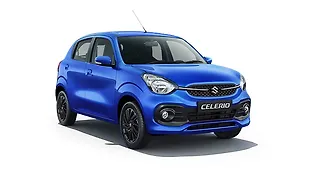
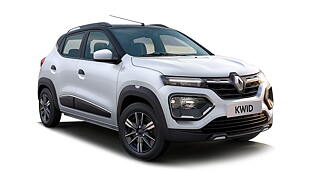
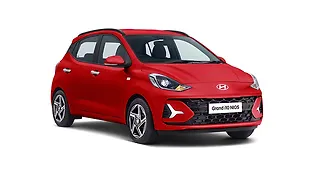

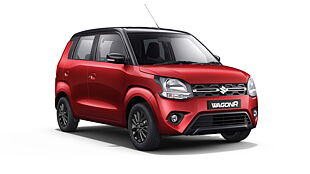
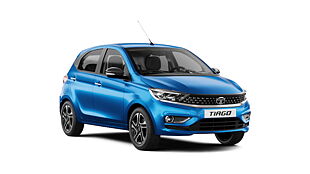
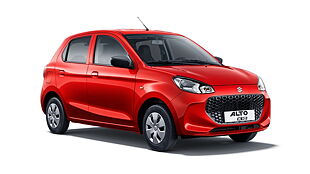
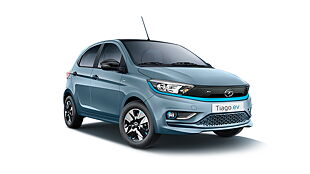
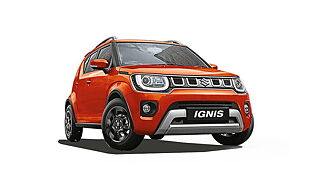
Colors
Reviews
- (27 Ratings) 24 Reviews
4.4/5
- This car is so comferteble.This car is super car And this car interior or exterior is so beautiful and this car is so comferteble. Nice car and this car performance is so superb. This car service and maintenance cost is so low.Rating parameters(out of 5)4
Exterior
5Comfort
5Performance
3Fuel Economy
4Value For Money
About the ReviewerPurchase UsedDriven forFew thousand kilometersRead MoreWas this review helpful?20 - A car like airplaneIt s simply like an airoplane style while I drive this car I feel like a pilot superb caar and it's millage are also a great in petrol it's riding quality is good in smaller areas of city it's to good to rideRating parameters(out of 5)5
Exterior
5Comfort
4Performance
4Fuel Economy
4Value For Money
About the ReviewerPurchase NewDriven forFew thousand kilometersRead MoreWas this review helpful?00 - Great car ...I love it.It's a very good car and value for your hard earned money...I love the way it drives the feel I get from the steering wheel..but the the high speed stability could have been better and the body role could have controlled a bit...over all it's a great hatchback and I love it.Rating parameters(out of 5)3
Exterior
4Comfort
4Performance
4Fuel Economy
4Value For Money
About the ReviewerPurchase NewDriven forIts my mate since agesRead MoreWas this review helpful?00


